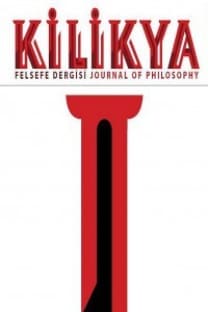David Hume’un Beğeni Standardı II: Kaynak, İdeal Eleştirmenler ve Standard
Bu çalışma, David Hume’un beğeninin bir standardı olduğu iddiasına yönelik incelememin ikinci aşamasıdır. Böyle bir incelemeye başlamamın nedeni, çalışmanın birinci aşamasının başından da söylediğim gibi, açık bir şekilde görülen beğeni farklılıklarına rağmen, tümevarımsal akıl yürütmeyi eleştiren deneyci bir filozof olan David Hume’un beğeninin bir standardı olduğunu iddia etmesidir. Deneyci bir filozof olduğu için, Hume’un bu standardı a priori ya da doğuştan idelere dayandırma olanağı yoktur. Diğer taraftan, Hume, tümevarımsal akıl yürütmeyi eleştirerek, deneyimden tüm insanlar için bir ölçüt olabilecek kesinlikte bir bilgi ya da standart üretmenin olanağını neredeyse tamamen ortadan kaldırmıştır. İncelemenin birinci aşaması olan “David Hume’un Beğeni Standardı I: Farklılıklar ve Standart” başlıklı makalede, Hume’un beğeni farklılıklarına rağmen nasıl olup da bir beğeni standardı olduğunu iddia ettiğini ele almıştım. İncelememin ikinci aşaması olan bu çalışmada ise, Hume’un beğeni standardının sanat eserlerinin bazı nitelikleriyle insan zihninin doğal yapısı arasındaki bir uyuşmadan kaynaklandığı iddiasını ve bu standardı belirli niteliklere sahip ideal eleştirmenler üzerinden nasıl açıkladığını ele alıp, Hume’un beğeni standardı tartışmasının genel bir değerlendirmesini yapacağım.
David Hume’s Standard of Taste II: Source, Ideal Critics and the Standard
This study is the second phase of my investigation concerning Hume’s claim that there is a standard of taste. The reason for my undertaking such an investigation is that, as I said at the beginning of the first phase of my study, Hume, an empiricist philosopher who criticizes inductive reasoning, claims that there is a standard of taste, although there are apparent differences in taste. As he is an empiricist philosopher, for Hume, there is no possibility of basing this standard on a priori or innate ideas. On the other hand, Hume, by criticizing inductive reasoning, almost completely abolishes the possibility of producing a knowledge or a standard that is certain enough to become a criterion for all people, from experience. In the essay entitled “David Hume’s Standard of Taste I: Differences and the Standard,” which is the first phase of my investigation, I have discussed how Hume happened to claim that there is a standard of taste, although there are differences in taste. In this study, which is the second phase of my investigation, I will discuss Hume’s claim that the standard of taste stems from the correspondence of some of the qualities of the work of art with the natural structure of the mind, and how he explains this standard on the basis of ideal critics, who have specific characteristics, and I will make an overall assessment of Hume’s discussion of the standard of taste.
___
- Carroll, N. (1984). Hume’s Standart of Taste. The Journal of Aesthetics and Art Criticism (43) 2, 181-194.
- Hume, D. (1998a). Of the Standart of Taste. Stephen Copley & Andrew Edgar (ed.), Selected Essays içinde (ss. 133-154) New York: Oxford University Press.
- Hume, D. (1998b). The Sceptic. Stephen Copley & Andrew Edgar (ed.), Selected Essays içinde (ss. 95-113) New York: Oxford University Press.
- Hume, D. (2007). An Enquiry Concerning Human Understanding, Peter Millican (ed.), New York: Oxford University Press, 2007.
- Kivy, P. (1967). Hume’s Standart of Taste: Breaking the Circle. The British Journal of Aesthetics (7) 1, 57-66.
- Kuhn, T. S. (2007) Kopernik Devrimi: Batı Düşüncesinin Gelişiminde Gezegen Astronomisi. (H. Turan, D. Bayrak & S. K. Çelik, çev.), Ankara: İmge Kitabevi Yayınları.
- Kulenkampff, J. (1990). The Objectivity of Taste: Hume and Kant. Nous (24) 1, 93-110.
- Plato. (2005) Meno and Other Dialogues. (Robin Waterfield, çev.) içinde (ss. 97-143) New York: Oxford University Press.
